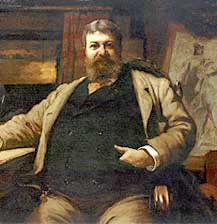“Those who can, do,” observed George Bernard Shaw. “Those who can’t, teach.” As someone who has spent a lifetime teaching I’ve never warmed to that observation. I was reminded of it the other day when I overheard a remark from an architect colleague, who also happens to be a teacher. “The A-students end up teaching,” he said. “The B-students end up working for the C-students.” Other than the fact that grade inflation has virtually eliminated C-students, his observation accords with my own experience. Two of the three top students in my graduating class ended up as teachers; some of the weakest students, on the other hand, were precisely those who early on opened their own firms, or became partners. The average student is likely to be an employee. This has something to do with both the teaching and the practice of architecture. Teaching tends to over-emphasize design, but the best designers don’t necessarily make the best practitioners. Success in the profession depends about 50 percent on design, and 50 percent on other abilities, especially social skills. As the great H. H. Richardson ( seen below in an 1886 portrait) pointed out, the most important thing in architecture is getting the job.


Have you seen the Ten Commandments of Architecture?
From: http://www.archnewsnow.com/features/Feature350.htm
By Jim Childress, FAIA
January 21, 2011
It was time to dust off the Ten Commandments of Architecture and hold them over my head like Charlton Heston (blessedly they were etched in Microsoft Word rather than stone). They have been passed down to me, in part, by Bill Grover, partner emeritus, and my current partners at Centerbrook Architects. I have done a bit of editing and updating through the years.
The occasion was the annual visit of Professor Elizabeth Petry and her University of Hartford architecture students. Several of their initial questions touched on the fabled issue of architects’ comet-sized egos. The word is apparently on the street.
After telling them to sit down, shut up, and listen in awe, I reassured them that such was not the case at Centerbrook.
I’m just kidding.
Their questions were astute and concise, including: What makes a good architect? How do I go about getting hired? I went straight to the yellowing Word document:
1. Thou Shalt Not Compartmentalize: In addition to learning to design, thou should write well, spell correctly, figure out how to get jobs and keep clients happy, take out the trash, make a good cup of Joe, be able to build models, master sustainability as well as the latest technological tools. Do all this and more, EXCEPT … hire a really good professional to photograph your work. It will pay off in awards and in landing new jobs.
2. Don’t Be Disappointed When a Client Rejects Your Design: It only means another opportunity to design. In architecture there are many solutions to the same question and designing is what you do.
3. Always Exceed Your Client’s Expectations: The corollary is: Establish attainable expectations.
4. Cost Counts: No matter what clients may say, or how deep their pockets, cost is foremost in the minds of all clients great and small. Make sure there is a clear, written understanding of the expected project cost and have a plan in case the budget gets out of whack.
5. Problems are Opportunities: Show them how good you are in a pinch.
6. Bad News Travels Fast: An unhappy client is your worst nightmare. The corollary is: Satisfied clients become good friends and good references.
7. Art First, Mammon Second: Make every project an artistic success, and you will thrive. If your first priority is making money, you will go broke.
8. Go Forth and Collaborate: Architecture is a team sport. Surround yourself with talented and enjoyable people, in the office and outside. Share the credit with colleagues and consultants. Run an open office. The fewer doors the better; and just one coffee pot where the designing herd can gather and ruminate.
9. Listen: Believe it or not, people besides you have good ideas and insights. This applies to clients, staff, builders, consultants, building users, even your spouse. In the end it will be your client’s building, not yours. If you want to be a star, move to Hollywood.
10. Do Right, Have Fun: Clients are spending a lot of money; they expect something special. There also should be some fun in the mix, for your client and for you as well.
If there were an 11th Commandment, it would be: Have a sense of humor.